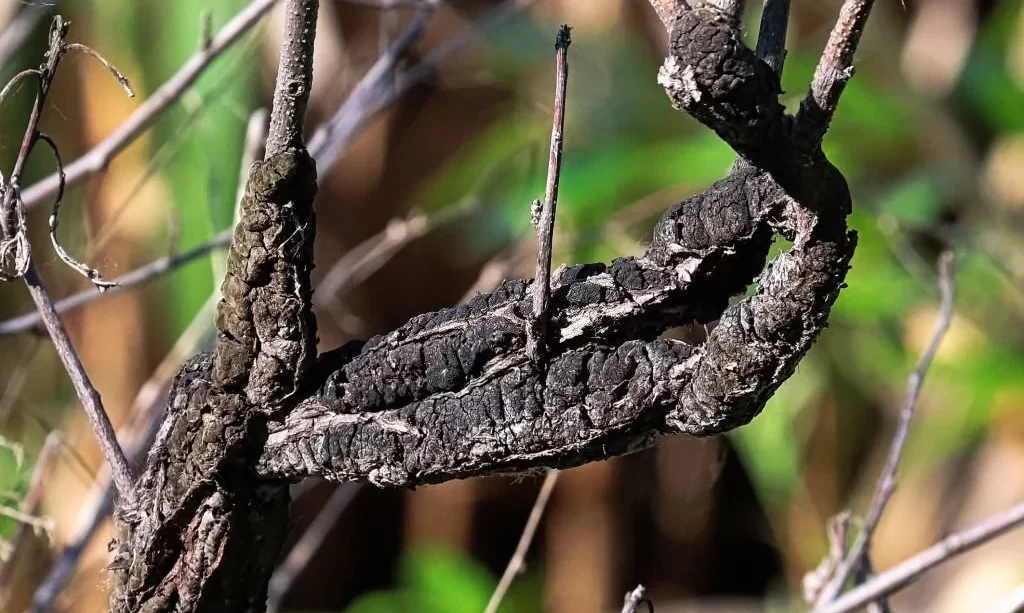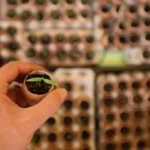In the intricate world of horticulture and arboriculture, where trees and shrubs thrive under our care, there exists a persistent and often puzzling challenge: black knot fungus. This fungal disease, while a well-known adversary to the health of various plant species, has raised questions and concerns among gardeners, landscapers, and arborists alike. One such question looms large: Is black knot fungus harmful to humans? In this article, we embark on a journey to unravel the mysteries surrounding this fungal culprit, exploring its impact on plants and assessing whether it poses any risks to human health. By shedding light on these matters, we aim to equip individuals with the knowledge needed to navigate their encounters with this enigmatic arboreal ailment safely and confidently.
- COMPLETE PLANT COVERAGE – Bonide Fruit Tree Spray is an excellent concentrate that contains insecticide, fungicide, aphicide, miticide, scalicide, and a spreader sticker.
- VARIETY OF INSECTS AND DISEASES – Controls a diverse selection of insects including Japanese beetles, mites, flea beetles, aphids plus more. Also controls certain diseases such as black spot, downy mildew, brown rot, coryneum blight, and many more.
- FOLIAGE PROTECTOR – Used to guard apples, cherries, grapes, strawberries, peaches, roses, ornamental evergreens, and flowers.
- INCLUDES SPREADER STICKER – Helps to improve the effectiveness of insecticides, herbicides, and fungicides by providing more uniform coverage along with increasing adhesion and penetration.
- EASY TO APPLY – Product instantly mixes with water and should be applied using either a hose-end sprayer or tank sprayer. Carefully read and use according to label directions.
What is Black Knot Fungus?
Black knot fungus, often referred to as Dibotryon morbosum, is a common plant disease that primarily affects various species of trees and shrubs. Its name derives from the characteristic dark, irregular swellings or knots it forms on the branches and twigs of its plant hosts. These knots, which can range in size and shape, are a telltale sign of the disease and are often accompanied by a velvety, olive-green to black spore-producing surface.
The fungus, like many plant pathogens, can be insidious in its progression, gradually weakening and disfiguring the host plant. It targets a range of species, with plum and cherry trees being among the most susceptible. Black knot fungus is not only a source of frustration for gardeners and arborists but also carries ecological and economic consequences due to its impact on tree health and fruit production.
The Potential for Human Contact
For those who tend to trees and shrubs, encounters with black knot fungus are not uncommon. Gardeners, landscapers, and arborists may find themselves in close proximity to infected plants during routine maintenance, pruning, or removal. This proximity raises valid concerns about whether humans can come into contact with the fungus and whether such contact poses any risks.
While humans are unlikely to be directly harmed by the fungus itself, the potential for contact arises when handling infected plant material. This interaction may involve touching or manipulating branches, twigs, or knots affected by black knot fungus, prompting a desire to delve deeper into the potential consequences of such encounters.
Toxicity and Allergenicity
Black knot fungus has garnered attention for its impact on plant health, but what about its potential effects on humans? When it comes to toxicity and allergenicity, black knot fungus presents relatively low risks. The primary concern lies in the possible presence of toxic compounds, though these are typically found in small quantities and are unlikely to cause significant harm to humans.
- Toxic Compounds: Some fungal species produce compounds that can be toxic to humans or animals. While black knot fungus does contain certain compounds, they are not present in amounts that pose an immediate danger to human health.
- Allergic Reactions: Another consideration is the potential for allergic reactions. Contact with black knot fungus or its spores may, in rare cases, lead to skin irritation or respiratory issues in individuals with preexisting allergies. However, such reactions are infrequent and typically mild.
Risks and Precautions
Understanding the potential risks associated with black knot fungus is essential for anyone who works with or near infected trees and shrubs. While the risks are generally low, taking precautions is advisable:
- Wear Gloves: When handling infected branches or knots, wearing gloves is a simple yet effective way to minimize direct contact with the fungus and its spores.
- Avoid Inhalation: When pruning or removing infected material, take care to avoid inhaling spores. Using a dust mask or respirator can provide added protection.
- Proper Disposal: Dispose of pruned branches and knots in a responsible manner. Burning or burying infected material can help prevent the spread of the disease.
- 3-IN-1 GARDEN SPRAY – Earth’s Ally 3-in-1 Plant Spray is an insecticide, miticide and fungicide. The formula is better than neem oil sprays for plants and effectively kills and controls soft-bodied insects and common plant diseases with a synergistic blend of essential oils.
- KILLS AND REPELS INSECTS – Kills common soft-bodied insects including spider mites, aphids, whiteflies, mealybugs, leaf rollers and scale.
- CONTROLS AND PREVENTS DISEASE – Controls common plant disease including powdery mildew, downy mildew, blight, canker, black spot and leaf spot.
- POWERFUL, PLANET-FRIENDLY RESULTS – Formulated with safe ingredients, the actives in Earth’s Ally 3-in-1 Plant Spray are thyme oil, rosemary oil, clove oil and peppermint oil. It is an OMRI Listed formula suitable for use in organic gardening.
- PROVEN BEE SAFE – Earth’s Ally is committed to protecting our pollinators. Every formula is independently tested and proven safe for the bee population.
Safe Practices for Gardeners and Arborists
Gardeners, landscapers, and arborists can adopt safe practices to reduce the potential risks associated with black knot fungus:
- Regular Inspections: Periodic inspections of trees and shrubs can help identify signs of black knot fungus early, allowing for prompt action.
- Pruning Techniques: When pruning infected branches, make clean cuts well below the affected area to ensure complete removal of the fungus.
- Sanitization: Disinfect pruning tools between uses to prevent the unintentional spread of fungal spores.
- Educate and Inform: Educate team members and clients about the nature of black knot fungus, its appearance, and the importance of early detection and proper handling.
Conclusion
In the realm of horticulture and arboriculture, the enigmatic presence of black knot fungus is a reminder of the intricate relationship between plants, pathogens, and those who care for them. While this fungal disease can have significant implications for plant health, the risks it poses to human health are relatively low. Toxic compounds, if present, are generally not in quantities that are immediately harmful, and allergic reactions are infrequent and mild.
With this understanding, gardeners, landscapers, and arborists can navigate their encounters with black knot fungus with confidence. By following simple yet effective precautions—such as wearing gloves, avoiding inhalation of spores, and proper disposal of infected material—they can ensure their safety while tending to trees and shrubs. The battle against black knot fungus remains an important one, both for plant health and for the preservation of the beauty and vitality of our green spaces.






